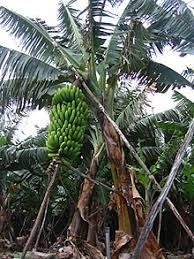Bismillahir Rahmanir Rahim
Assalamu Alaikum Wa Rahmatullahi Wa Barakatuhu
Dear Companions Today I want to share with you some words about the evils of killing foetuses.Welcome to this post and congratulations to all of you.
Bananas, both delicious and nutritious, are a staple in diets around the world. Their cultivation involves a fascinating process that contributes to their widespread availability. Let's delve into the nutritional value of bananas and the methods involved in their cultivation.

source
Nutritional Value of Bananas
**1. ** Energy Source: Bananas are an excellent source of energy, primarily due to their high carbohydrate content, mainly in the form of natural sugars like glucose, fructose, and sucrose. This makes them an ideal snack for a quick energy boost, especially before or after physical activities.

source
**2. ** Vitamins and Minerals: Bananas are rich in essential vitamins and minerals. They are a good source of vitamin C, which is crucial for the immune system and skin health. Additionally, bananas contain vitamin B6, which plays a role in brain development and function.

source
**3. ** Dietary Fiber: Bananas are an abundant source of dietary fiber, promoting digestive health. Fiber aids in regulating bowel movements, preventing constipation, and supporting a healthy gut microbiome.

source
**4. ** Potassium Content: Bananas are renowned for their high potassium content. Potassium is vital for maintaining proper heart and muscle function, as well as regulating blood pressure. Consuming bananas helps balance sodium levels in the body, reducing the risk of hypertension.
**5. ** Antioxidants: Bananas contain antioxidants, such as dopamine and catechins, which help combat oxidative stress. These compounds contribute to overall health by neutralizing harmful free radicals in the body.

source
Cultivation of Bananas
**1. ** Climate Requirements: Bananas thrive in tropical climates with consistent warmth, abundant sunlight, and well-distributed rainfall. The temperature should ideally range between 80 to 90 degrees Fahrenheit. Areas with high humidity are favorable for banana cultivation.

source
**2. ** Soil Conditions: Bananas prefer well-draining, fertile soils rich in organic matter. Sandy loam or loamy soils are ideal. The pH level should be between 5.5 and 7 for optimal growth.
**3. ** Planting Process: Bananas are propagated through suckers, which are offshoots emerging from the base of the parent plant. These suckers are carefully separated and planted in prepared holes. Adequate spacing is essential to ensure proper air circulation and sunlight exposure.
**4. ** Water Management: While bananas require consistent moisture, waterlogging can be detrimental. Proper drainage systems should be in place to prevent water stagnation. Regular irrigation, especially during dry spells, is crucial for optimal growth.
**5. ** Fertilization: Bananas benefit from regular fertilization. A balanced fertilizer with nitrogen, phosphorus, and potassium is applied during different growth stages. Organic matter, such as compost or well-rotted manure, can also be incorporated into the soil.
**6. ** Pest and Disease Control: Common pests affecting banana plants include nematodes, weevils, and aphids. Regular monitoring and appropriate pest control measures are essential. Diseases like Panama disease and Black Sigatoka can be controlled through proper sanitation and the use of resistant banana varieties.
**7. ** Harvesting: Bananas are typically ready for harvest within 9 to 12 months, depending on the variety and growing conditions. Harvesting is done when the fruits have reached their full size, and the peel has changed from green to yellow. Careful handling during harvesting helps prevent damage to the delicate fruits.
**8. ** Post-Harvest Handling: Post-harvest handling involves careful transportation, storage, and packaging. Bananas are often picked green to withstand shipping and reach their destination in optimal condition. Controlled atmospheres, such as refrigeration, are employed to extend the shelf life of bananas.
source
The nutritional richness of bananas, coupled with the intricacies of their cultivation, showcases the importance of this fruit in global agriculture and nutrition. From providing a quick energy boost to contributing essential vitamins and minerals, bananas are a versatile and accessible dietary component. The cultivation process, influenced by climate, soil conditions, and meticulous care, ensures a bountiful harvest. As we continue to appreciate and enjoy bananas in various forms, it's crucial to recognize the efforts and knowledge involved in bringing this nutritious fruit from the plantation to our tables.

Upvoted. Thank You for sending some of your rewards to @null. Read my last posts to make sure that BLURT burning is profitable for you. Before using this bot please make sure your account has at least 100 BP. Get more BLURT:
@ mariuszkarowski/how-to-get-automatic-upvote-from-my-accounts@ blurtbooster/blurt-booster-introduction-rules-and-guidelines-1699999662965@ nalexadre/blurt-nexus-creating-an-affiliate-account-1700008765859@ kryptodenno - win BLURT POWER delegation@ ctime/burn-bot-liquid-blurt